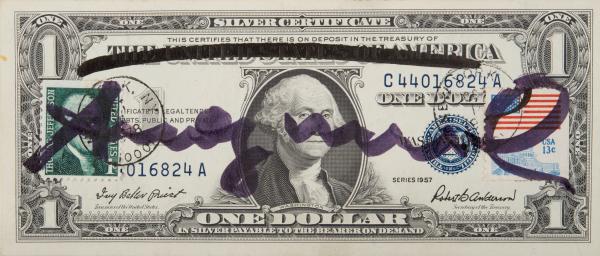WHAT IS THE HISTORY OF THE POP ART MOVEMENT?
The Pop art movement is a cultural movement linked to the 1960s. It is present in many artistic fields such as painting and illustration, but also sculpture, design, architecture and comics. Its origin dates back to the early 1950s in England under the leadership of Richard Hamilton or Eduardo Paolozzi. The movement is rooted in the foundations of the very recent consumer society in the Western world. Naturally, this cultural proliferation was exported to the United States and met with great success there.
One of the peculiarities of the movement initiated by the forerunners of the English "The Independent Grou p" is the relation to the subject of the work. Indeed, subjects often drawn from popular culture are in fact opposed to the elitist culture of art. In essence, the material lacks its usual context for viewing.
One of the peculiarities of the movement initiated by the forerunners of the English "The Independent Grou p" is the relation to the subject of the work. Indeed, subjects often drawn from popular culture are in fact opposed to the elitist culture of art. In essence, the material lacks its usual context for viewing.
Warhol's career in five key moments
The artist was born Andrew Warhola Jr. on August 6, 1928 in Pennsylvania, Pittsburgh. While mostly known for his graphic work, he has also worked as a writer and director, but also as a music producer. He evolved within his New York studio Factory, creating thousands of works and organizing cultural evenings that made the heart of the movement beat.
1945-1955: The beginnings of Warhol's career
The son of a Slovak coal miner, Warhol came from a working-class background during the Great Depression. Schooled in 1933, he was reached in 1937 by Sydenham's Chorea (the dance of Saint-Guy).
This diagnosis imposes on him the rest and isolation he spends with his mother, listening to the radio and collecting photos of movie stars.
At the very end of the 1940s, Warhol obtained his BA in High School in Pittsburgh. It was during these years that he developed his technique of stamped drawing. With his diploma in hand, he landed a job as an advertising designer for Glamor magazine. In 1952, Andy Warhol had his first exhibition in New York. It was also during these first years of activity that he sharpened his artistic approach mingled with inspirations from his activity as an advertising designer and the emerging artistic movement.
The 60s, the explosion of Pop Art
Under the impetus of its English initiators, the Pop art movement swept the world in the mid-1950s.
It was at the very beginning of the 1960s that Warhol began to be clearly associated with the movement, in particular with his series of paintings inspired by comics. In 1962, Andy Warhol participated in the first major manifestation of Pop art in the United States. Alongside many American and international artists, the New Realism movement finds immediate resonance in mass culture. Although steeped in his past as a commercial designer, he fully claimed his belonging to the art at this time.
It was at the very beginning of the 1960s that Warhol began to be clearly associated with the movement, in particular with his series of paintings inspired by comics. In 1962, Andy Warhol participated in the first major manifestation of Pop art in the United States. Alongside many American and international artists, the New Realism movement finds immediate resonance in mass culture. Although steeped in his past as a commercial designer, he fully claimed his belonging to the art at this time.
The meeting between Marylin Monroe and the father of Pop art
The artist is best known for having produced a very famous silkscreen print of Marylin Monroe just before her death in 1962. Like him, the actress frequented Serendipity 3, a New York restaurant in the 1950s. This diptych by Marylin Monroe, like other subjects treated by Andy Warhol Pop art, conceals a desire to humanize that which had been reduced to its image as a sex symbol. The proliferation of portraits of the actress refers in fact to the image of which she herself would have been a prisoner, going until her disappearance, in almost constant features.
The assassination attempt on Warhol
At the beginning of June 1968, he fell under the bullets of Valerie Solanas in the lobby of Factory. This young radical feminist activist had written and brought Warhol the only manuscript of a play. Annoyed at not having received the master's approval and that the latter misplaced his production, she opened fire on him several times. Severely affected, Warhol was even pronounced dead before barely surviving this disastrous fate. The artist did not testify against Solanas at her trial and she was sentenced to 3 years in prison. This assassination attempt deeply marked Warhol to the point that he sank into an obsession with security.
1970-1980: the end of the career of the pope of Pop Art
In addition to the major retrospectives he began on his most famous works, the artist produced extensively on commission for brands that were crazy about Andy Warhol Pop art during this period. This is a way for his art to nurture the deep relationship that exists between it and the world of consumption. Jack of all trades, he also launched his cable television channel and offered visibility to young artists such as Basquiat and Keith Harring.
> Enter the universe of Andy Warhol


.png)







1.png)





